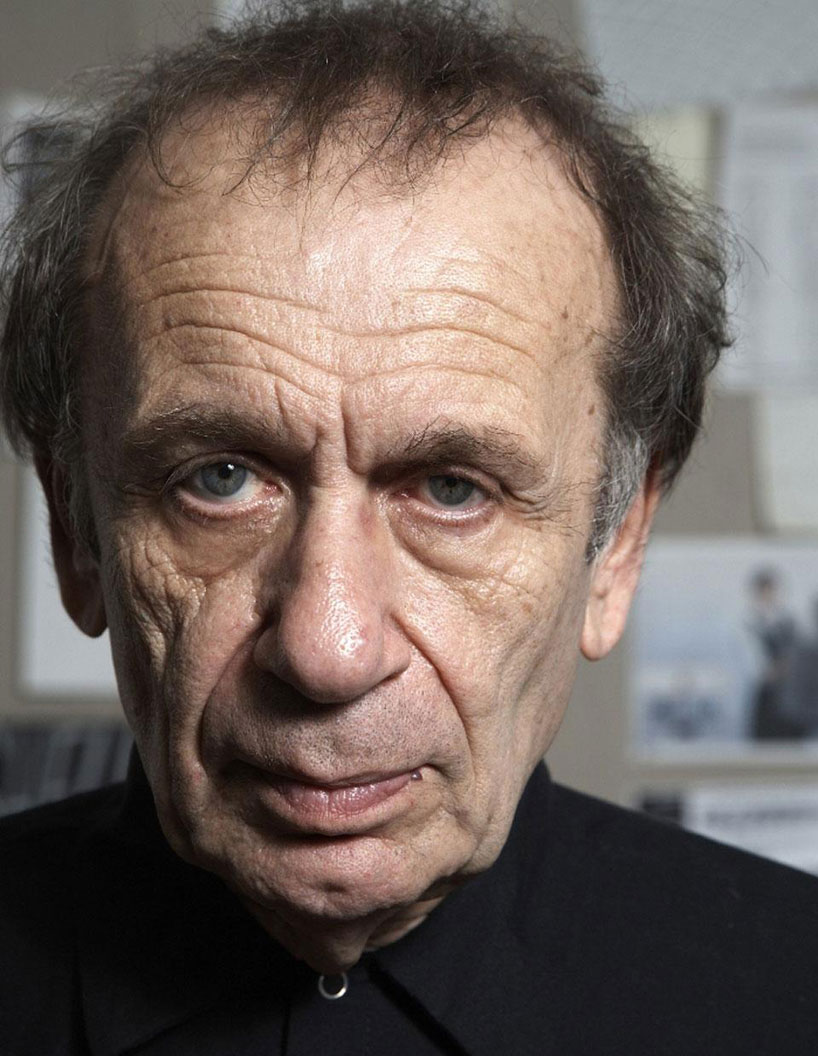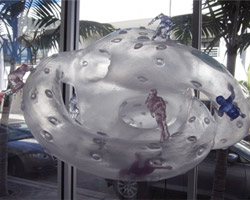vito acconci
designboom met vito acconci at his office in new yorkon may 21st, 2006.
what is the best moment of the day?
when I’m alone. since I spend all day day working in the studiowith people, I depend on them but I welcome the time whenthere is nobody here except me. I can wonder around thestudio, brood and think alone.
what kind of music do you listen to at the moment?
I think that my best work has always been connected with themusic of that moment. right now I’m listening to pop andelectronic music, – vladislav delay, plastic men…a lot of japanese noise people – merzbow…
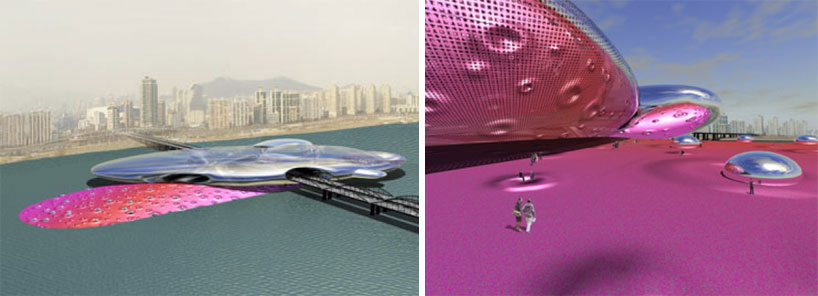
seoul performing arts center, 2005winning project.courtesy acconci studio © vito acconci.
do you listen to the radio?
never.why? probably because in new york there are no goodmusic stations.
what books do you have on your bedside table?
none, but I always have books around.

left: housing project in beaumont, 2006courtesy acconci studio © vito acconci.
right: beaumont, 2006courtesy acconci studio © vito acconci.housing as part of the space, yet at the same timethe architects wanted to bring housing into another time,a current time. starting points were the terracing hills.acconci studio built houses into the ‘steps’ (of the hills).
do you read for pleasure rather than for work?
it’s all the same. I don’t separate them.
because you are an artist…
well, me and the people here at the studio think of ourselves asdesigners. we’re not artists. my work comes from a backgroundin art. I realized that I wasn’t interested in viewers, I was interestedin users and participants, so it made sense that my work had tomove to design or architecture. though it took a long time for meto see this..
do you read design magazines?
all the time,by this I mean that we have them around the studio.
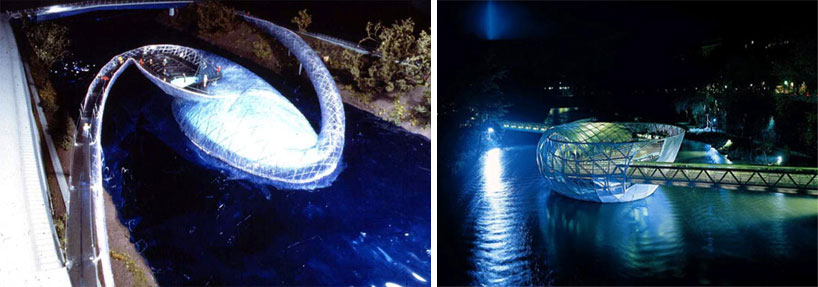
left: drawing of ‘mur’ island, graz, austriacourtesy acconci studio © vito acconci.
right: ‘mur’ island, 2003 graz, austriacourtesy acconci studio © vito acconci.the shell contains an open-air theatre. underneath the dome, one finds a café,and a fantastic landscape for children has been created in the small areawhere these two forms intersect, the zones gradually merge.around the island flows water, the architects construct an object that isalso flowing and changeable. what makes the island so exciting is not onlyits combination of interior/exterior but also the new perspectives it providesof the city.
where do you get news from?
a mixture of the internet and the new york times.
do you notice how women are dressing?
I often notice how women are dressing.we as designers would love to start designing clothing,we have thought about it a lot.it would be concerned with the same things that the restof our design is, – how do you make something changeable?we would love to do a piece of clothing that constantly changes.
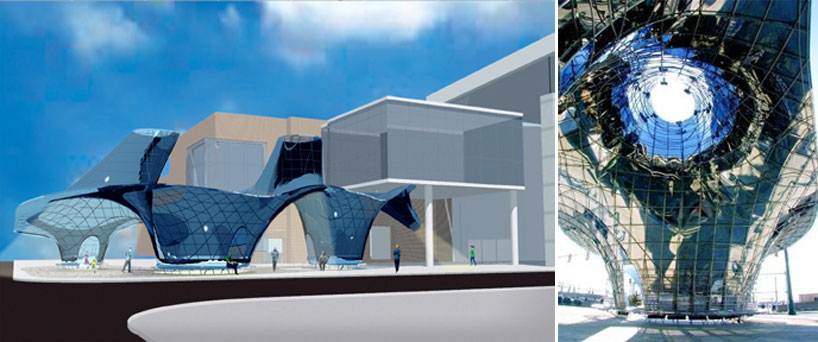
left: drawing of corner plaza, 2001,canon performing arts center, memphis, usacourtesy acconci studio © vito acconci.
right: detail of roof like a liquid flung over the plaza, 2003canon performing arts center, memphis, usacourtesy acconci studio © vito acconci.
what kind of clothes do you avoid wearing?
I always wear the same thing.I have many decisions in life to make and so my clothing is allthe same. very basic pretty much what you see.(dressed in all black)
do you have any pets?
no.
when you were a child, did you want to become a
designer/architect?
when I was child I thought in terms of either writing or art.I began as a writer, my background isn’t really art,it’s writing.until I was around 27 or 28 I thought of myself as a writer.I never went into drawing, I don’t like the way that I draw.I don’t like anything that my hands produce but I like to thinkthat I can form sentences, and that I have the start of an idea.
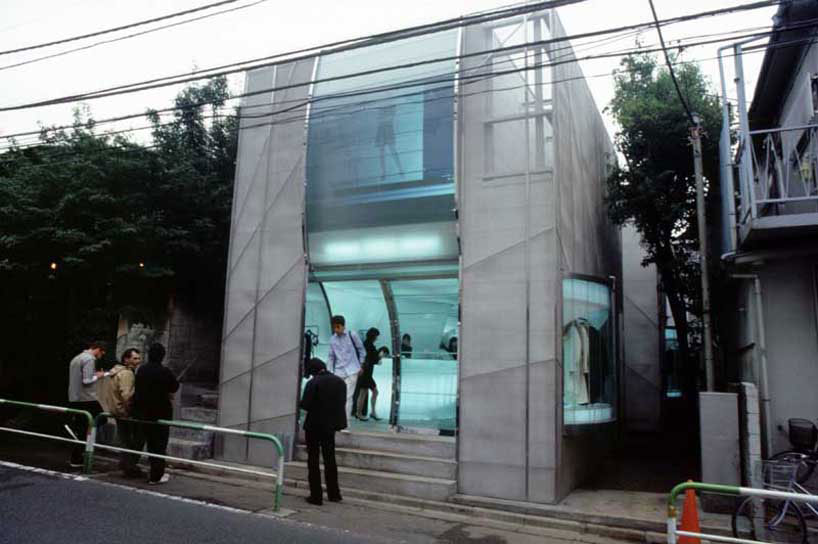
united bambo store in daikanyama, tokyo, 2003.steel mesh, steel pipe, faceted glass, PVC projection material, fluorescent lights,photo-booth camera, computer screen, video projection, i pods & headphones.
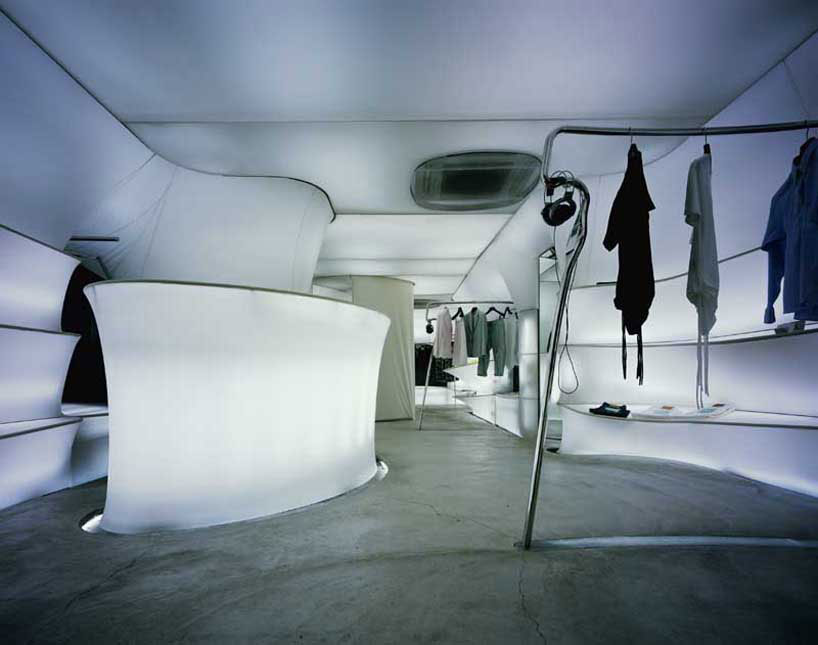
interior of united bamboo store.acconci studio tried to make a store that was like the clothing it sells,a place where you can touch the store as well as the product.a store that is as soft as skin, made of PVC material,the kind used for rear screen projection.
do you discuss your work with other designers?
no, not really because I spend so much time with the peoplehere from the studio. I tend not to spend very much timewith other people. when it became clear that my work wasshifting towards design it was essential to me to work as partof a group of people.I both assumed and wanted the design to be publicly available.I thought that if something begins private I don’t know if it couldever become public.this means to work in a group of at least three people is needed.one person is a solo, two is a couple or a reflection,the third person starts an argument.the public begins when an argument starts.
where do you work on your designs and projects?
in the studio.sometimes I may work alone just to get the basis of an idea,sometimes I need that withdrawal time knowing that in themorning I may have to introduce something to the peoplein the studio.
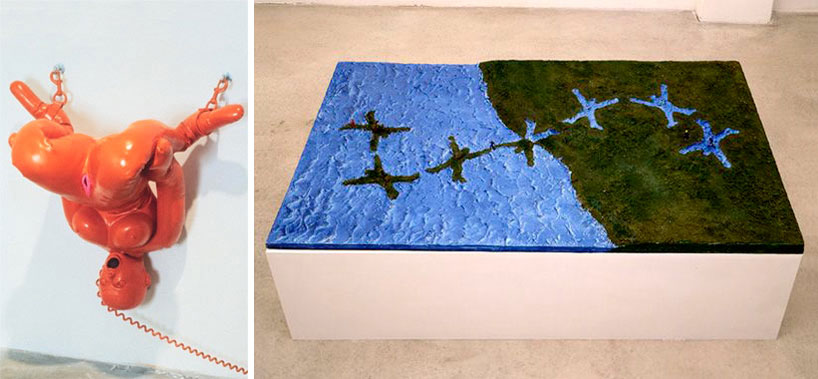
left: ‘home entertainment center (orange)’, 1991 at mai 36 galery in zürichpart of 12 painted inflatable sex dolls series.courtesy acconci studio © vito acconci.
right: ‘project for land and lake’ 1988(can you mix land and water?)courtesy acconci studio © vito acconci.
describe your style, like a good friend of yours
would describe it.
it’s difficult to sum up…I would say that our goal is to thicken the plot.what I do best is create general structures, then thestudio works together and we come up with something.we want to see what happens to a space if you turn itinside out, if we stretch it or if we warp it.
very much like a child?
in-fact often we design for users that don’t mind havinga second chance at being a child again.receivers who like to look around things and to feelthings out.
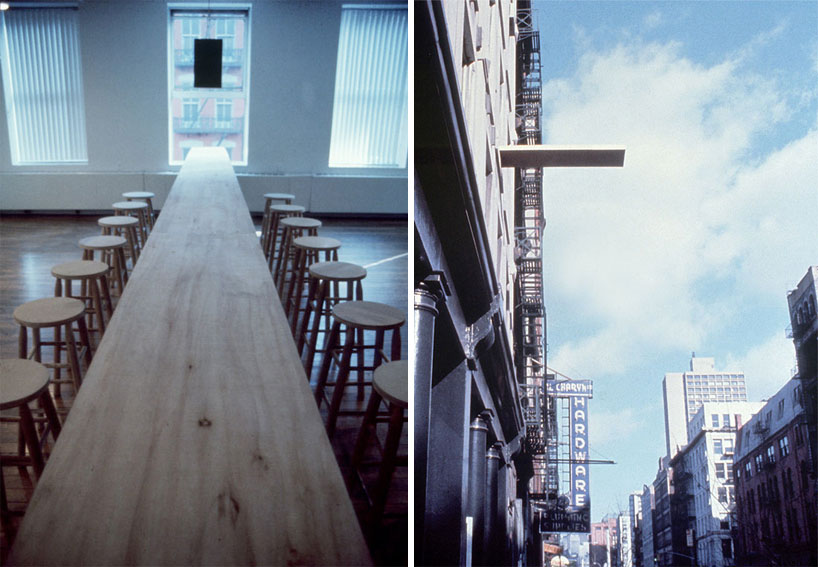
left: ‘where are we now (who are we anyway?), 1976by vito acconci © vito acconcian art installation (wooden table & stools, painted wall,4-channel audio) at the sonnabend gallery, new york.
right: ‘where are we now (who are we anyway?), 1976by vito acconci © vito acconci‘a plank that changes function: it starts by settling intothe room as a table, eight stools on either side – but itdoesn’t stop there, it continues toward the window,extends out the window and becomes a diving board.’
can you describe an evolution in your work from your
first projects to the present day?
there is a line but it has been through so many forms.as a writer I became very conscious of the space on a page,I started to get obsessed with questions such as- what makes you move from left margin to right margin?- from top of the page to bottom of the page?in other words, I saw the page as a field over which I asa writer could move and you as the viewer could move too.I then figured that if I was so concerned with space whywas I limiting myself to a piece of paper when there is afloor or a street to work with.so things then went to an art context.I started off the process by thinking how do I move in real spaceand what makes me move.I began by using my own person. I realized that I had to focuson myself – it became ‘I’ and ‘me’…but there are other people in the world.so later I focused on how do I concentrate on him/her,or how do I concentrate on you while you concentrate on me?I think that it all began with that notion of movement.in that you move through the page, you move within yourself,you move within a space and back and fourth.gradually it becomes clear that you /the people are in a space.the question then is how to react to a space.the great thing about architecture and design is that peopleare aware of it even if they think that they aren’t.everyone has passed through a doorway,sometimes you may not even notice the doorway but sometimesyou might, be it because the doorway is a little to narrow or a littleto low. it’s great that we get to experience these things everyday.
which project has given you the most satisfaction?
it would be easier to point to which projects have given usthe most trouble and why they have given us trouble.why have there been projects where we have worked foralmost a year and gotten nothing that we really liked?usually the project that we are working on currently is theproject that will be the ‘best’ that we have ever done,it doesn’t always turn out that way but that’s the aim.
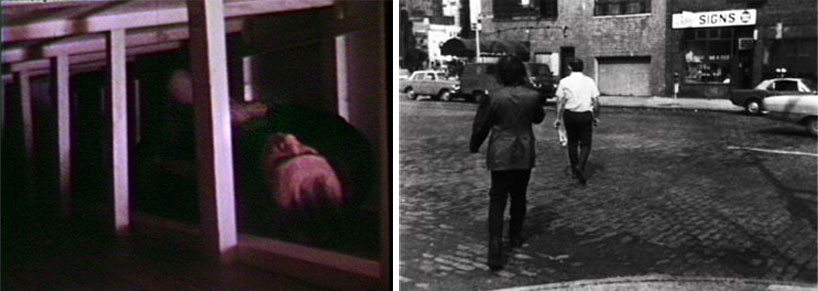
left: ‘seedbed’ installation/performance, january 1972 (at the sonnabend gallery).courtesy acconci studio © vito acconci.acconci lay hidden masturbating while vocalizing into a loudspeakerhis fantasies about the visitors walking above him on the ramp :over the course of three weeks, he masturbated eight hours a day whilemurmuring things like, ‘you’re pushing your cunt down on my mouth’ or’you’re ramming your cock down into my ass.’in ‘seedbed’ acconci is the producer and the receiver of the work’s pleasure.he is simultaneously public and private.
right: ‘following piece’, 1969courtesy acconci studio © vito acconci.‘following piece’ documents a performance, in the course of the action,the artist followed different people in the street.the action stopped suddenly, each time the person entered a private space.with this simple gesture, acconci transcends the relativity of the learnedrules and behaviors concerning the distinction between private and public.the act of following could last a few minutes, if the person then got into a car,or four or five hours, if the person went to a cinema or restaurant.acconci carried out this performance everyday for a month.and he typed up an account of each ‘pursuit’, sending it each time to a differentmember of the art community.the concept was of the participation of persons who did not specifically agreeto participate. it relied on persons who did not even know that they were being used.
who would you like to design something for?
we think of design very much as ‘all purpose design.’we would love to design a building or a city but we also wantto design a glass or clothing.we would like to design something that liberates people thatallows them to have a new experience, or to get them outof habits. we are interested, like many designers at the moment,in a sort of ‘mobile design’. rather than something that you go to,something that you take with you.one of the problems that the studio has had is that I have areputation in an art context. so people don’t often take usseriously as designers although that is starting to change now.one of the things that changed this maybe was the ‘mur island’project in gratz, austria.
is there any designer and/or architect from the past
that you appreciate a lot?
when I think of architects of the past there are probably three:giovanni piranesi, pierre boulèt and archigram.
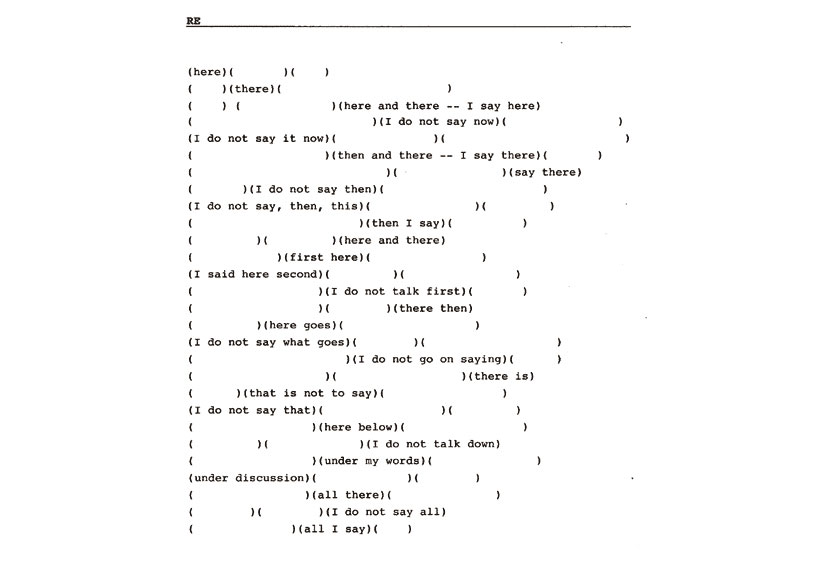
and those still working?
nox, greg lynn and many others.when I think of the architects that I’m interested in they areusually around twenty years younger than me.I’m not so interested in what the architects of my generationare doing, except for rem koolhaas, but in his case I see himmore as a synthesizer.with the younger architects I want to know what they aredoing now.
any advice for the young?
to think of work as something that you can be committed tonow, but you don’t always have to be committed to it.commitment should never become belief, because when itbecomes belief it can create too strong of a mould thatyou aspire to, you can try to hard to live up to that belief.design and architecture has to be the opposite of religion.it has to always be changing as time changes.try to know what your time is because it’s there,all you have to do is know when to reorganize and disorganizethe time your in.
what are you afraid of regarding the future?
I’m afraid of george w. bush.at the same time maybe the likes of george w. bush isan optimistic sign. it seems that we are in a time where there isso much urge to close boundaries, to keep outsiders out.this probably comes from fear, in a world that is changing.a world that will be without national boundaries,without separations.this fear creates the urge to keep the old way going.I have fear though that behind the likes of george w. bushand the limiting of boundaries etc. there is a conservativeimpulse and is therefore fueled with money – meaning that itmight last longer than it should.
VITO ACCONCI (4)
PRODUCT LIBRARY
a diverse digital database that acts as a valuable guide in gaining insight and information about a product directly from the manufacturer, and serves as a rich reference point in developing a project or scheme.
